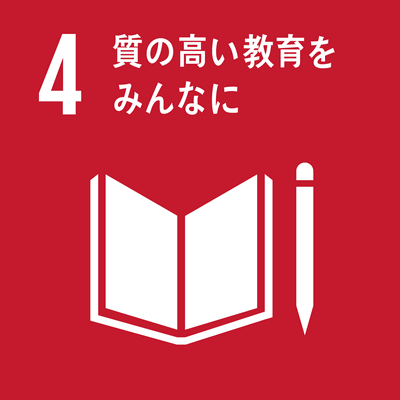シラバス表示
シラバスの詳細な内容を表示します。
→ 閉じる(シラバスの一覧にもどる)
科目の基本情報
| 開講年度 | 2020 年度 | |
|---|---|---|
| 開講区分 | 工学研究科(博士前期課程)電気電子工学専攻 | |
| 領域 | 主領域 : E; 副領域 : F | |
| 受講対象学生 |
大学院(修士課程・博士前期課程・専門職学位課程) : 1年次, 2年次 |
|
| 選択・必修 | ||
| 授業科目名 | 固体物性工学特論 | |
| こたいぶっせいこうがくとくろん | ||
| Solid State Physics | ||
| 単位数 | 2 単位 | |
| ナンバリングコード | ||
| 開放科目 | 非開放科目 | |
| 開講学期 |
後期 |
|
| 開講時間 |
水曜日 9, 10時限 |
|
| 開講場所 | 工学部教室 | |
| 担当教員 | 青木 裕介(工学研究科電気電子工学専攻) | |
| AOKI, Yusuke | ||
| SDGsの目標 |
|
|
学修の目的と方法
| 授業の概要 | この講義は金属,半導体,絶縁体,磁性体 ,誘電体などの固体結晶の物性について学ぶ。 (Outline) This course introduces the properties of solid crystals such as metals, semiconductors, insulators, magnetic materials, and dielectrics. |
|---|---|
| 学修の目的 | 電気電子工学に用いられている材料の性質について理解することを目的とする。 (Learning Objectives) The main aim of this course is to deepen knowledge and understanding of the properties of solid crystals such as metals, semiconductors, insulators, magnetic materials, and dielectrics. |
| 学修の到達目標 | (1)金属,半導体,絶縁体,磁性体 ,誘電体などの固体結晶の物性につい理解すること。 (2)これら固体結晶の物性の微視的振る舞いと巨視的現象との対応について理解すること。 (3)固体結晶の電子物性及びその評価技術について,理解すること。 (4)電気電子材料の応用例について説明できること (Achievements) The goals of this course are to (1) Understand the physical properties of solid crystals such as metals, semiconductors, insulators, magnetic materials, and dielectrics. (2) To understand the correspondence between the microscopic behavior of the physical properties of these solid crystals and macroscopic phenomena. (3) Understand the electronic properties of solid crystals and their evaluation techniques. (4) Understand the application of electrical and electronic materials. |
| ディプロマ・ポリシー |
|
| 成績評価方法と基準 | 受講態度50%,レポート50%で評価し、合計 100点満点で60点以上を合格とす る。 (Grading policies and criteria) Your final grade will be calculated according to the following process: Usual performance score 50%, Reports 50%. To pass, students must earn at least 60 points out of 100. |
| 授業の方法 | 講義 |
| 授業の特徴 |
プレゼンテーション/ディベートを取り入れた授業 グループ学習の要素を加えた授業 Moodleを活用する授業 その他、能動的要素を加えた授業(ミニッツペーパー、シャトルカードなど) 教員と学生、学生相互のやり取りの一部が英語で進められる授業 教員と学生のやり取りは日本語でも、英語による論文や教材の講読を含んだ授業 |
| 授業改善の工夫 | |
| 教科書 | |
| 参考書 | (Reference materials) CHARLES KITTEL:"Introduction to Solid State Physics (7th edit.)"(John Wiley & Sons, Inc.) 岩本光正:“電気電子材料工学”,オーム社(2004年09月) |
| オフィスアワー | 毎週金曜日12:00~13:00,電子情報棟3階1316号室 (Office hour) Aoki: Fri 12:00~13:00, office |
| 受講要件 | |
| 予め履修が望ましい科目 | |
| 発展科目 | |
| その他 |
英語対応授業である。 |
授業計画
| MoodleのコースURL |
|---|
| キーワード | 固体物理 金属 半導体 超伝導体 誘電体 絶縁体 磁性体 非晶質 |
|---|---|
| Key Word(s) | Solid state physics, Metals, Semiconductors, Superconductors, Dielectrics, Insulators, Magnetics, Amorphous |
| 学修内容 | 講義内容 1.結晶構造 (単位格子,ブラベー格子) 2.結晶構造 (ミラー指数,結晶構造) 3.逆格子(ラッグの法則,逆格子ベクトル,回折条件) 4.電子線・中性子線回折 5.結晶構造解析 6.各種X線回折法 7..誘電体の巨視的性質1誘電率,誘電分極 8.誘電体の巨視的性質2複素誘電率,誘電緩和,余効関数 9.微視的性質と巨視的性質の対応 10.誘電体の微視的理解(分極,気体・液体・固体の誘電率 ) 11.誘電体の分散と吸収複素誘電率の周波数分散 12.誘電体の電気伝導 13.圧電性・焦電性結晶の対称性,圧電基本方程式 14 磁性体 15 新しい電気電子材料とデバイス応用への流れ 16 総括 1. Crystal structure II (unit lattice, Bravais lattice) 2. Crystal structure (Miller index, crystal structure) 3. Reciprocal lattice (Lag's law, reciprocal lattice vector, diffraction conditions) 4. Electron / neutron diffraction 5. Crystal structure analysis 6. X-ray diffraction methods 7. Macroscopic properties of dielectric materials 1: Dielectric constant, dielectric polarization 8. Macroscopic properties of dielectrics 2: Complex permittivity, dielectric relaxation, aftereffect function 9. Correspondence between microscopic and macroscopic properties 10. Microscopic understanding of dielectrics (Polarization, dielectric constant of gas / liquid / solid) 11. Dispersion of dielectrics and frequency dispersion of absorbing complex permittivity 12. Electric conduction of dielectric 13. Symmetry of piezoelectric / pyroelectric crystals, basic equation of piezoelectric 14 magnetic material 15 Recent electrical and electronic materials and device applications 16 summary |
| 事前・事後学修の内容 |

